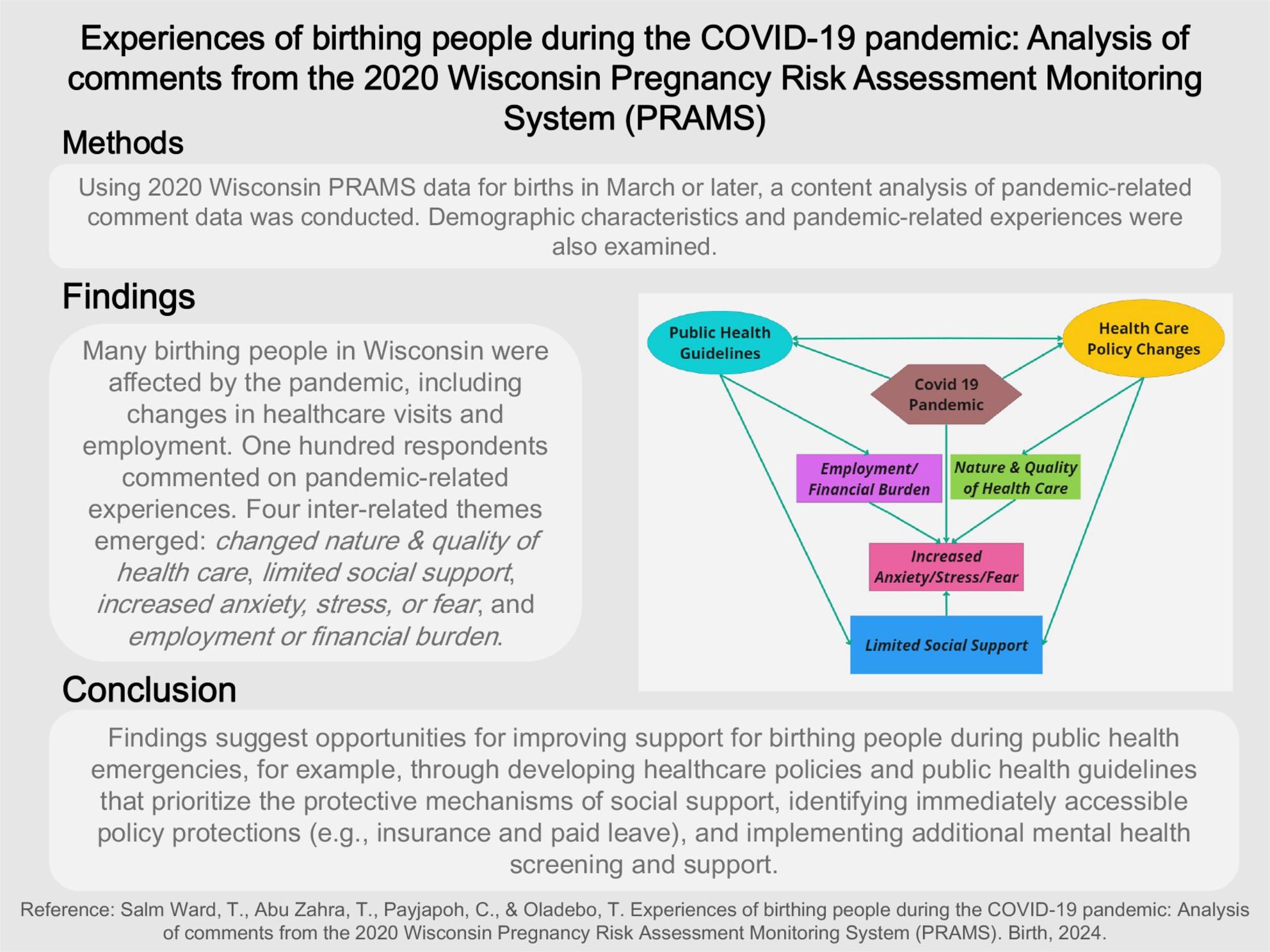Experiences of birthing people during the COVID-19 pandemic: Analysis of comments from the 2020 Wisconsin Pregnancy Risk Assessment Monitoring System (PRAMS)
Abstract
Background
The COVID-19 pandemic has taken a significant toll on the US population, with birthing people having special clinical needs. The Pregnancy Risk Assessment Monitoring System (PRAMS) is a population-based surveillance system for monitoring birthing people's experiences. Comment data from the PRAMS survey can provide further insight into birthing people's experiences. This study aims to use PRAMS data to describe pandemic-related experiences in a representative sample of birthing people in Wisconsin to help inform future emergency preparedness planning.
Methods
This study analyzed 2020 Wisconsin PRAMS data for births in March or later. Content analysis of pandemic-related comment data was conducted, and quantitative data on demographic characteristics and pandemic-related experiences were examined.
Results
Findings from 1406 respondents indicated that many birthing people were affected by the pandemic, including changes in healthcare visits and employment. One hundred respondents commented on pandemic-related experiences; four interrelated themes emerged from content analysis: changed nature and quality of healthcare, limited social support, increased anxiety, stress, or fear, and employment or financial burden. Most comments discussed negative impacts; some expressed positive aspects.
Discussion
Findings suggest opportunities for improving support for birthing people during public health emergencies, for example, through developing healthcare policies and public health guidelines that prioritize the protective mechanisms of social support for birthing people, identifying additional and immediately accessible policy protections to support birthing and postpartum people (e.g., insurance and paid leave) during public health emergencies, and implementing additional screening and support to help address increased mental health needs during public health emergencies.



 求助内容:
求助内容: 应助结果提醒方式:
应助结果提醒方式:


